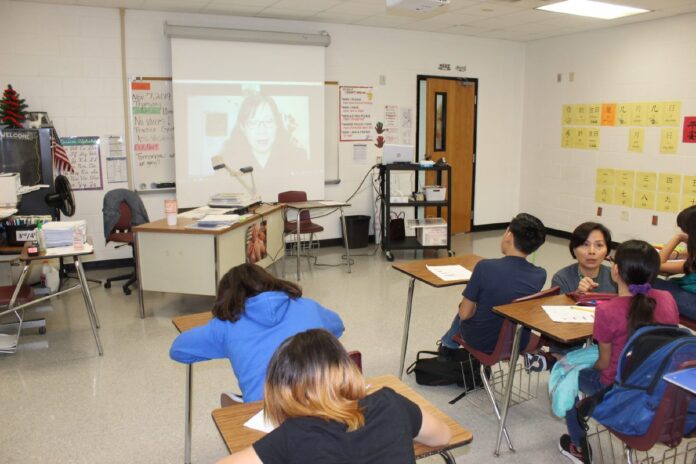HARLINGEN — Meng Tao spoke with an engaging familiarity with the students on the other side of the world.
“What are the three most common languages in the world?” she asked by teleconference from her office in far-off China.
“English, Spanish and Chinese!” the kids responded.
“Lots of people in your country speak Spanish, right?” she asked.
“Yes!”
“Any of you do?”
“Yes!” they answered enthusiastically,
“Wow!” she said. “Great! Now you speak three languages.”
About 30 students are taking Mandarin Chinese at the World Languages Academy at Vernon Middle School. The class is taught by Chinnei Teng, who hails from Taiwan. The students receive instruction from both her and her counterpart in China
“It’s going pretty good,” she said. “I would say 65 to 70 percent are doing a very good job. They are pretty interested in writing. We just started a writing class yesterday. They started to recognize the stroke in Chinese. So I can tell they are very interested. Of course for conversation they like that, too.”
The students showed an eagerness to demonstrate their Chinese skills, introducing themselves by their Chinese names first.
“I really enjoy being in the Chinese class and learning a new language,” said Emily Reyes, 11. “It’s really inspiring for me. Chinese culture seems really interesting and pretty amazing to try and learn. We get to learn a new language that some people don’t really know.”
The day’s lesson with Meng Tao was an overview of how the Japanese written language was strongly influenced by Chinese writing. However, many of the Chinese characters have a very different meaning when used in Japanese. Also, Chinese is a tonal language; the same word can have very different meanings depending on how its pronounced.
They all seemed to be eating it up.
“Yesterday they were doing the strokes and I can tell they really like it,” Teng said. “So far they have learned to tell their nationalities and their families.”
Of special challenge is how to show shades of meaning with different words. For example, when referring to one’s brother, there are different words to indicate whether he’s an older or younger brother.
And so the exploration continues through a new range of words and meanings and characters.





